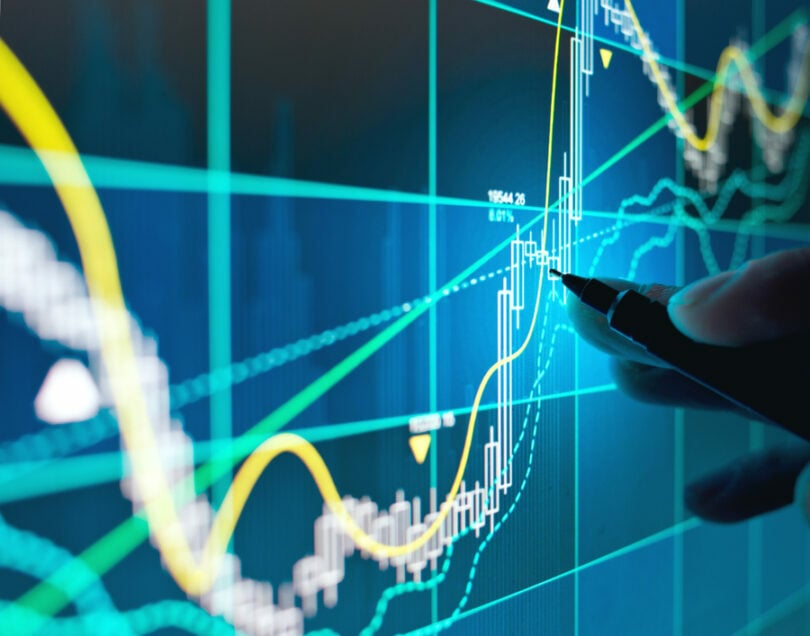Recent inflation figures released in the US were less than expected and had positive repercussions on the markets. Indications that inflation has reached its peak, which means that the Federal Reserve will be less stringent in its next meeting, pushed investors back to stocks and bonds.
According to Bloomberg, US stocks saw inflows of $11 billion, the largest in eight weeks. Rate-sensitive growth funds also recorded the largest outflow since December, while financial stocks withdrew cash for the second week in a row, a reversal after 18 weeks of outflows, according to the data.
Global bond inflows amounted to $11.7 billion, while $4.3 billion of cash was withdrawn.
The US inflation rate reached 8.5 percent last July – while estimates were pointing to 8.7 percent. This indicates that the Federal Open Market Committee, at its next meeting on the 20th of next September, will not present an increase of 75 basis points, but rather that 50 basis points hike has become more likely.
But can it be said that the risks of continued growth in inflation and a possible recession disappeared with this data?
The signs are very mixed.
True, US inflation data has shown a moderate slowdown, but inflation is still so high and well above the 2 percent target that the Fed – and its other central banks of course – will not be able to brake on planned rate increases. This is on the one hand.
On the other hand, the US experienced a technical recession – defined as two consecutive quarters of negative growth – but overall macroeconomic conditions remain strong. The jobs report showed an increase of 528,000 in July or more than double market expectations. The Atlanta Federal Reserve’s Wage Growth Tracker also showed average hourly earnings rose 7.5 percent in the past 12 months.
Thus, the strong labor market data confirms that investors still expect the Federal Reserve to remain hawkish for the rest of this year, albeit at a lighter pace.
Federal Reserve Chairman Jerome Powell was clear when he said that the risk of continued inflation is greater than the risk of recession. “Growth and the labor market need to slow down,” he said. This clearly means that the slowdown may slow the pace of monetary tightening, but not stop or reverse it anytime soon.
In a survey from Bank of America released Friday, fund managers and analysts believed that a shift in monetary policy will not occur until 2024 or later.
In any case, investors are awaiting what the Federal Reserve will say about the economy at its next meeting. The two parties will monitor the impact of inflation on spending. The US Bureau of Economic Analysis will release the personal consumption expenditures reading for July on August 26th. The consumer price index and consumer spending expenditures measure inflation based on the pricing of a basket of goods.
The two baskets are different, and the formulas used to calculate each measure are not the same. The CPI calculation is based on a survey of the goods consumers buy, while the PCE is based on a survey of companies selling the goods.
It’s the same in Europe and the United Kingdom
In Europe and the United Kingdom, the shock from the Ukraine war increased inflation, prompting both the European Central Bank and the Bank of England to raise interest rates by 50 basis points recently.
Eurozone consumer price index inflation hit another record in July at 8.9 percent on an annual basis, driven by food and commodity inflation. A 0.3 point jump in core CPI inflation was a sign of widening inflationary pressures.
The rate hike by the European Central Bank was the first in 11 years.
The bank argued that this was an initial step that would allow it to move to a “meet the case” approach to policy rates. The Bank of England reiterated that it was prepared to act “aggressively if necessary” by continuing to raise interest rates if inflationary pressures persist, despite the recession.
And while Eurozone GDP growth was stronger than expected at 2.8 percent annually in the second quarter thanks to the lifting of coronavirus-related restrictions, the high-frequency data still points to some weakness.
European Commission data showed consumer and business confidence fell to its lowest levels after the outbreak of the war in Ukraine. Germany’s Ifo index fell to its lowest level in 25 years in July on concerns that the disruption to gas supplies could affect the economy.
All this means that the European Central Bank will continue its hawkish policy until 2023, although its task is particularly difficult, given that monetary policy has little effect on energy prices, as the main driver of inflation in Europe, which escalated after the Russo-Ukrainian war.
Fighting the scourge of inflation is the first and last concern of all monetary policymakers in the world. What about the repercussions of this on the recession, especially in America? The president of Queen’s College at the University of Cambridge, Mohamed El-Erian, says the specter of recession in the United States is not yet gone. “The (US) central bank still has a lot of work to do to get interest rates to a neutral level and beyond, having allowed inflation to take hold in the system.”








